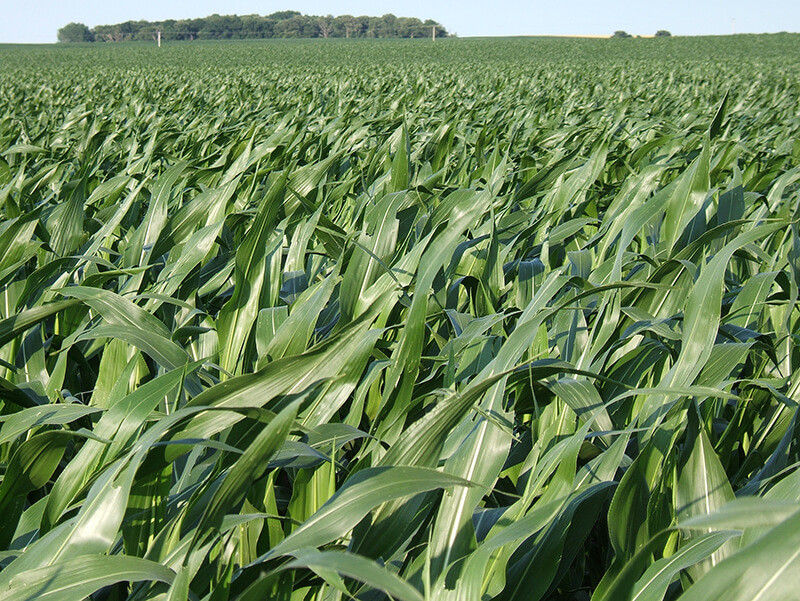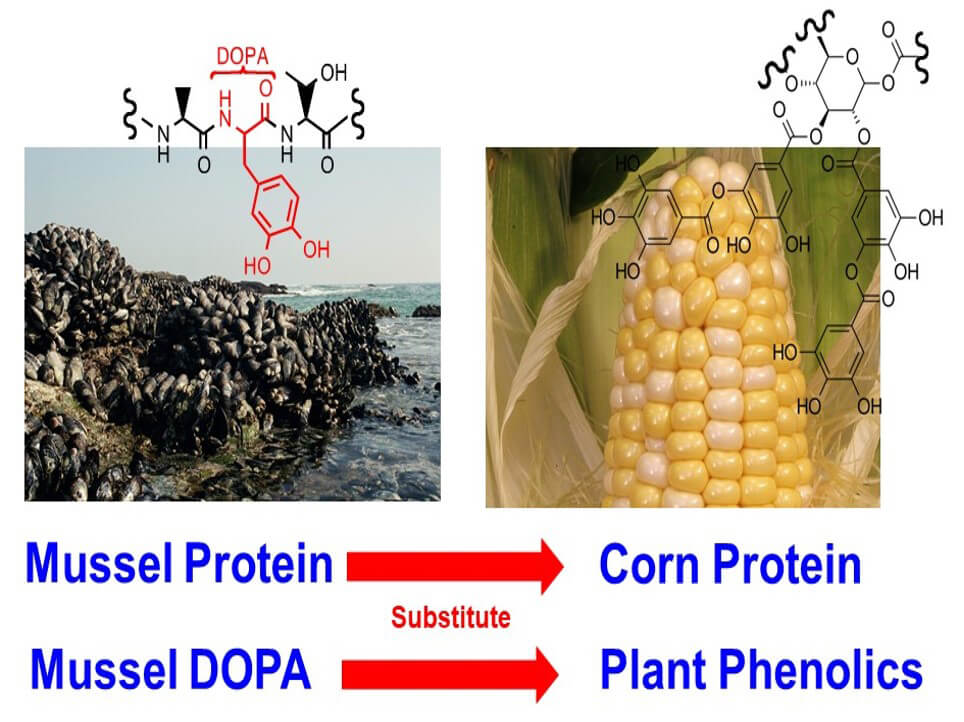December 5, 2019
Your food may help make stickier, safer glues for laptops, packaging, furniture
 A group of scientists at Purdue University has taken inspiration from the field, kitchen and the ocean to create strong glues. (Image provided)
Download image
A group of scientists at Purdue University has taken inspiration from the field, kitchen and the ocean to create strong glues. (Image provided)
Download image
WEST LAFAYETTE, Ind. – You cannot make glue out of a ham sandwich – but you may be able to use the components of that food to create a strong adhesive.
That’s the thinking behind technology developed by a group of scientists at Purdue University, who have taken inspiration from the kitchen and the ocean to create strong glues. The team’s work is published in the Oct. 8 edition of Advanced Sustainable Systems.
“Adhesives are used in almost every consumer product that we touch each day,” said Gudrun Schmidt, an associate professor of practice in Purdue’s College of Science, who helped lead the research team. “We would love to leave this planet a better place for the future generations. It turns out creating new adhesives is one way that we will get there.”
Schmidt said almost all of the glues used in electronics and other consumer products are petroleum-derived, permanent and often toxic. The Purdue team chose compounds in foods, like nuts, fruits and plants, all of which might have similar chemistry to the adhesives seen in shellfish that stick to rocks.
The team included Jonathan Wilker, a Purdue professor of chemistry and materials engineering, who studies mussels and oysters to create adhesives based on how those shellfish stick to rocks.
 The Purdue University team chose compounds in foods, like plants, nuts and fruits, all of which might have similar chemistry to the adhesives seen in shellfish that stick to rocks. (Image provided)
Download image
The Purdue University team chose compounds in foods, like plants, nuts and fruits, all of which might have similar chemistry to the adhesives seen in shellfish that stick to rocks. (Image provided)
Download image
“We have created high-performance, tunable adhesives that are nontoxic and degradable,” Schmidt said. “We found that some combinations of zein protein and tannic acid could be reacted together in order to generate high-performance adhesives that could be alternatives to carcinogenic formaldehyde used in the glues that hold lots of furniture and other household items together. It would be a big health benefit if we could switch over to bio-based or even food-based adhesives.”
Schmidt said other potential applications for the adhesives include cardboard packaging, cosmetics and construction materials like plywood.
The researchers have worked on patenting their technologies with the Purdue Research Foundation Office of Technology Commercialization. Ongoing efforts include potential development of a startup company based upon these new adhesives. For more information on licensing a Purdue innovation, contact the Office of Technology Commercialization at otcip@prf.org and reference track code 2017-WILK-67873.
About Purdue Research Foundation Office of Technology Commercialization
The Purdue Research Foundation Office of Technology Commercialization operates one of the most comprehensive technology transfer programs among leading research universities in the U.S. Services provided by this office support the economic development initiatives of Purdue University and benefit the university's academic activities through commercializing, licensing and protecting Purdue intellectual property. The office is managed by the Purdue Research Foundation, which received the 2019 Innovation and Economic Prosperity Universities Award for Place from the Association of Public and Land-grant Universities. The Purdue Research Foundation is a private, nonprofit foundation created to advance the mission of Purdue University. Visit the Office of Technology Commercialization for more information.
Writer: Chris Adam, 765-588-3341, cladam@prf.org
Sources: Gudrun Schmidtt, gudrun@purdue.edu
Jonathan Wilker, wilker@purdue.edu
Abstract
Strong Adhesives from Corn Protein and Tannic Acid
Gudrun Schmidt, Jessyca T. Woods, Lawrence X.-B. Fung, Christopher J. Gilpin, Bruce R. Hamaker and Jonathan J. Wilker
Modern society is in great need of environmentally sustainable and low‐cost alternatives to some petroleum derived adhesives. To allow recycling and avoid pollution, adhesives for single use products including packaging are of particular interest. Potential candidates for such applications are the adhesive formulations of corn zein protein and tannic acid presented here. High strength adhesive bonding is found when the formulations are optimized with regard to composition, pH, and curing temperature. Bonding is tested on aluminum substrates using lap shear configurations. Adhesion strengths exceed the minimal bonding of zein‐only controls. Maximum adhesion for zein and tannic acid is as strong as commercial Super Glue when measured under similar conditions. The system forms nanometer and micrometer sized pores throughout the bulk adhesive. A low amount of tannic acid and neutral pH of the strongest adhesive make the corn zein–tannic acid system potentially appealing for cost efficient adhesives used in packaging, cosmetics, and other single use applications where biomedical grade purity is not required.

